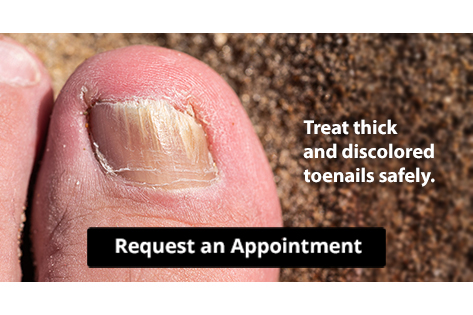Connect With Us
Blog
Items filtered by date: August 2024
How a Podiatrist Can Help You
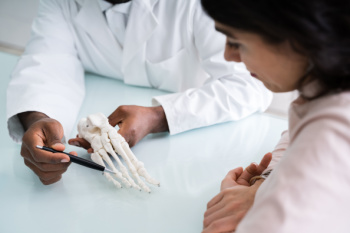
A podiatrist is a medical specialist focused on diagnosing and treating conditions related to the feet, ankles, and lower legs. These professionals are trained to handle a wide range of issues, from common problems like bunions and heel pain to more complex conditions such as fractures, diabetic foot care, and toe deformities. Visiting a podiatrist offers several benefits. They provide expert evaluations and tailored treatment plans for various foot and ankle concerns, ensuring accurate diagnoses and effective management. Podiatrists are skilled in performing surgeries, prescribing medications, and recommending targeted exercises to alleviate pain and improve mobility. They also offer preventive care and education to help avoid future problems. For those individuals with chronic conditions, such as diabetes, a podiatrist plays an important role in preventing complications by regularly monitoring foot health and providing specialized care. If you have any foot issues, it is suggested you schedule an appointment with a podiatrist who provides comprehensive, specialized treatment to maintain optimal foot and ankle health.
If you are experiencing pain in the feet or ankles, don’t join the stubborn majority refusing treatment. Feel free to contact Keleigh Muxlow, DPM from Colorado. Our doctor can provide the care you need to keep you pain-free and on your feet.
What Is a Podiatrist?
Someone would seek the care of a podiatrist if they have suffered a foot injury or have common foot ailments such as heal spurs, bunions, arch problems, deformities, ingrown toenails, corns, foot and ankle problems, etc.
Podiatric Treatment
A podiatrist will treat the problematic areas of the feet, ankle or lower leg by prescribing the following:
- Physical therapy
- Drugs
- Orthotic inserts or soles
- Surgery on lower extremity fractures
A common podiatric procedure a podiatrist will use is a scanner or force plate which will allow the podiatrist to know the designs of orthotics. Patients are then told to follow a series of tasks to complete the treatment. The computer will scan the foot a see which areas show weight distribution and pressure points. The podiatrist will read the analysis and then determine which treatment plans are available.
If you have any questions please feel free to contact our office located in Littleton, CO . We offer the newest diagnostic and treatment technologies for all your foot and ankle needs.
Toenail Problems
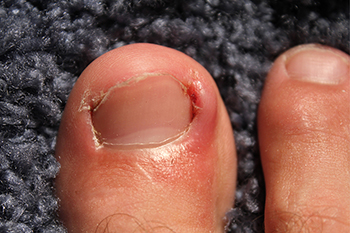
Toenail problems can cause significant discomfort and require attention. Ingrown toenails occur when the nail grows into the surrounding skin, leading to pain and infection. Nail fungus causes thickened, discolored nails and can spread if untreated. Toenail trauma from injuries can result in bruising, separation from the nail bed, or deformities. Clubbed nails, often associated with underlying health conditions, involve the enlargement and rounding of the nail tips. Discoloration of nail plates may indicate fungal infections, trauma, or systemic issues. If you have painful or unusual problems with your toenails, it is suggested that you schedule an appointment with a podiatrist for a diagnosis, specialized treatment, and to prevent possible complications.
Ingrown toenails can become painful if they are not treated properly. For more information about ingrown toenails, contact Keleigh Muxlow, DPM of Colorado. Our doctor can provide the care you need to keep you pain-free and on your feet.
Ingrown Toenails
Ingrown toenails occur when a toenail grows sideways into the bed of the nail, causing pain, swelling, and possibly infection.
Causes
- Bacterial infections
- Improper nail cutting such as cutting it too short or not straight across
- Trauma to the toe, such as stubbing, which causes the nail to grow back irregularly
- Ill-fitting shoes that bunch the toes too close together
- Genetic predisposition
Prevention
Because ingrown toenails are not something found outside of shoe-wearing cultures, going barefoot as often as possible will decrease the likeliness of developing ingrown toenails. Wearing proper fitting shoes and using proper cutting techniques will also help decrease your risk of developing ingrown toenails.
Treatment
Ingrown toenails are a very treatable foot condition. In minor cases, soaking the affected area in salt or antibacterial soaps will not only help with the ingrown nail itself, but also help prevent any infections from occurring. In more severe cases, surgery is an option. In either case, speaking to your podiatrist about this condition will help you get a better understanding of specific treatment options that are right for you.
If you have any questions please feel free to contact our office located in Littleton, CO . We offer the newest diagnostic and treatment technologies for all your foot and ankle needs.
Stop Your Toenail Fungus
Preventing and Managing Ankle Pain in Runners
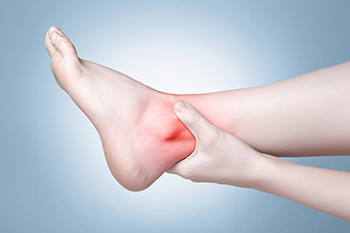
Ankle pain in runners can stem from overuse, improper technique, or weakness in the ankle joint. To prevent and manage this discomfort, it is essential to focus on strengthening and balancing exercises. Strengthening the ankle involves exercises such as calf raises and resistance band exercises that target the muscles around the joint, enhancing stability and reducing the risk of injuries. Balance training plays a vital role in preventing ankle pain. It involves exercises that improve proprioception and coordination, such as standing on one foot or using a balance board. Incorporating these practices into your routine can improve joint stability and overall foot alignment. Additionally, wearing supportive footwear and gradually increasing mileage can help to reduce strain on the ankles. If you are experiencing from ankle pain from running, it is suggested that you visit a podiatrist for effective treatment solutions.
Ankle pain can be caused by a number of problems and may be potentially serious. If you have ankle pain, consult with Keleigh Muxlow, DPM from Colorado. Our doctor will assess your condition and provide you with quality foot and ankle treatment.
Ankle pain is any condition that causes pain in the ankle. Due to the fact that the ankle consists of tendons, muscles, bones, and ligaments, ankle pain can come from a number of different conditions.
Causes
The most common causes of ankle pain include:
- Types of arthritis (rheumatoid, osteoarthritis, and gout)
- Ankle sprains
- Broken ankles
- Achilles tendonitis
- Achilles tendon rupture
- Stress fractures
- Bursitis
- Tarsal tunnel syndrome
- Plantar fasciitis
Symptoms
Symptoms of ankle injury vary based upon the condition. Pain may include general pain and discomfort, swelling, aching, redness, bruising, burning or stabbing sensations, and/or loss of sensation.
Diagnosis
Due to the wide variety of potential causes of ankle pain, podiatrists will utilize a number of different methods to properly diagnose ankle pain. This can include asking for personal and family medical histories and of any recent injuries. Further diagnosis may include sensation tests, a physical examination, and potentially x-rays or other imaging tests.
Treatment
Just as the range of causes varies widely, so do treatments. Some more common treatments are rest, ice packs, keeping pressure off the foot, orthotics and braces, medication for inflammation and pain, and surgery.
If you have any questions, please feel free to contact our office located in Littleton, CO . We offer the newest diagnostic and treatment technologies for all your foot care needs.
Facts About Bunion Surgery
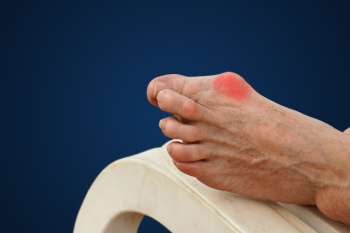
A bunion is a bony bump at the base of the big toe, causing it to lean toward the second toe. This deformity, consisting of bone and soft tissue, can result in significant discomfort. Bunions often develop from wearing tight or narrow shoes, particularly among women. Heredity also may play a part in bunion development. When lifestyle changes like wearing wider shoes and using protective pads do not alleviate the pain, bunion removal surgery, or a bunionectomy, may be necessary. This outpatient procedure can involve osteotomy to realign the toe or exostectomy to remove the bunion. Post-surgery, recovery typically takes six to eight weeks, with full recovery in four to six months. Patients initially wear a surgical boot or cast, and gradually transition to weight-bearing activities. Long-term success after bunion surgery hinges on proper footwear choices to prevent recurrence. If you are experiencing toe pain from a bunion, it is suggested that you schedule an appointment with a podiatrist for an exam, diagnosis, and treatment options.
If you are suffering from bunions, contact Keleigh Muxlow, DPM of Colorado. Our doctor can provide the care you need to keep you pain-free and on your feet.
What Is a Bunion?
A bunion is formed of swollen tissue or an enlargement of boney growth, usually located at the base joint of the toe that connects to the foot. The swelling occurs due to the bones in the big toe shifting inward, which impacts the other toes of the foot. This causes the area around the base of the big toe to become inflamed and painful.
Why Do Bunions Form?
Genetics – Susceptibility to bunions are often hereditary
Stress on the feet – Poorly fitted and uncomfortable footwear that places stress on feet, such as heels, can worsen existing bunions
How Are Bunions Diagnosed?
Doctors often perform two tests – blood tests and x-rays – when trying to diagnose bunions, especially in the early stages of development. Blood tests help determine if the foot pain is being caused by something else, such as arthritis, while x-rays provide a clear picture of your bone structure to your doctor.
How Are Bunions Treated?
- Refrain from wearing heels or similar shoes that cause discomfort
- Select wider shoes that can provide more comfort and reduce pain
- Anti-inflammatory and pain management drugs
- Orthotics or foot inserts
- Surgery
If you have any questions, please feel free to contact our office located in Littleton, CO . We offer the newest diagnostic and treatment technologies for all your foot care needs.
